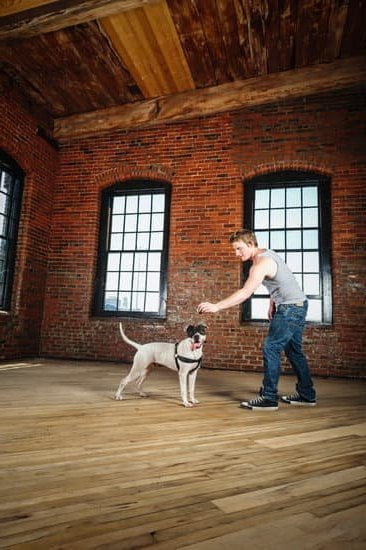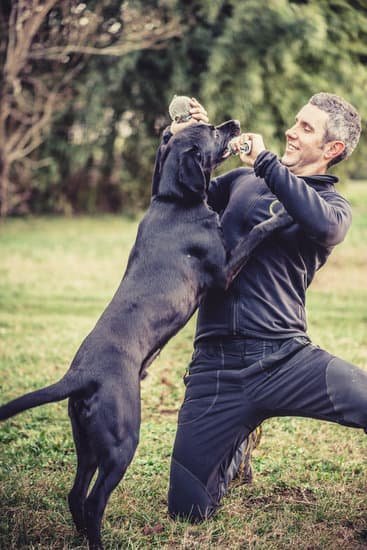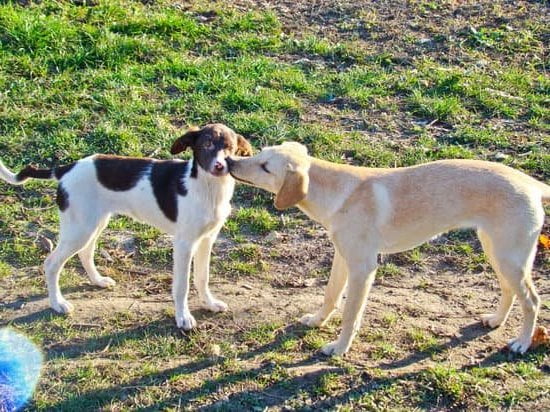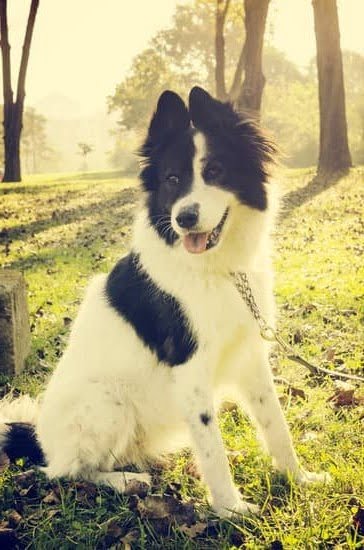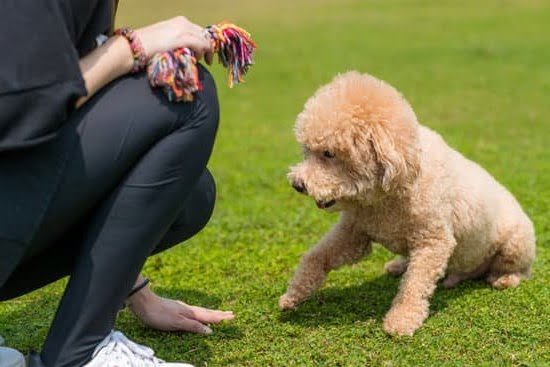Potty training is an essential part of a small dog’s early development, and it is natural for pet owners to wonder if smaller breeds take longer to potty train than larger ones. In this article, we will delve into the factors that can affect the potty training process for small dogs and explore different methods and tips for successful training.
Potty training is a crucial aspect of pet care as it helps small dogs develop good habits and prevents accidents in the home. Before delving into specific methods and tips, it is important to understand why potty training is important for small dogs and gain a brief overview of the process.
When it comes to potty training, there are various factors that can influence its duration and success. Biological factors such as size and breed, as well as environmental factors like living space and access to outdoor areas play a significant role. Additionally, owner consistency and patience also contribute to the effectiveness of potty training. We will explore how these factors come into play when potty training small dog breeds, along with specific challenges they may present.
Furthermore, we will discuss different potty training methods such as crate training, potty pads, outdoor training, and positive reinforcement techniques. By understanding these methods in relation to small dog breeds, pet owners can choose the best approach for their furry companions. Additionally, we will highlight common mistakes in small dog potty training and provide valuable tips for successful training based on routine establishment, positive reinforcement techniques, patience, and consistency.
Factors Affecting Potty Training
Small dogs do take longer to potty train compared to larger breeds. This is partly due to their biological makeup. Small breeds have smaller bladders and higher metabolisms, which means they need to eliminate waste more frequently than larger dogs. Additionally, certain breeds may have different temperaments and personalities that can impact their potty training tendencies. Understanding these biological factors can help owners set realistic expectations for the potty training process.
The living environment of a small dog also plays a significant role in potty training. Dogs living in apartments or homes without easy access to outdoor areas may find it more challenging to be let out regularly for bathroom breaks.
Conversely, small dogs with access to outdoor spaces may have an easier time getting into the routine of outdoor potty training. Understanding the environmental factors that impact a small dog’s potty training needs can help owners develop effective strategies for success.
One of the most critical factors affecting potty training is the consistency and patience of the owner. Small dogs require patient, consistent guidance when it comes to learning where and when to go to the bathroom. Owners who are patient and understanding during the potty training process will likely see better results from their small dog. Conversely, inconsistency or impatience from the owner can lead to confusion and setbacks in the potty training journey for small dogs.
By considering these factors affecting small dog potty training, owners can better understand why the process may take longer for their smaller breed pets. With this insight, they can tailor their approach to best meet their dog’s specific needs and work towards successful potty training outcomes.
Small Dog Breeds and Potty Training
When it comes to potty training, small dog breeds often present their own unique set of challenges. One common question that arises is, do small dogs take longer to potty train? The answer to this question can vary depending on several factors, including the breed of the dog, its size, and the training methods used.
Some small dog breeds are known to be more difficult to potty train than others. For example, toy breeds such as Chihuahuas, Dachshunds, and Yorkies are often cited as being more challenging in this area. This may be due in part to their smaller bladders and higher energy levels, which can make it more difficult for them to hold their pee for extended periods of time.
Additionally, small dogs are often bred for companionship rather than working or hunting purposes, which can affect their natural instincts when it comes to eliminating waste. This means that small breeds may require more patience and consistency when it comes to potty training. However, with the right approach and plenty of positive reinforcement, even the most stubborn small dog can learn good bathroom habits.
| Small Breed | Potty Training Tendency |
|---|---|
| Chihuahua | Challenging; requires patience and consistent routine |
| Yorkshire Terrier | May take longer to potty train due to high energy levels |
| Dachshund | Can be stubborn; needs positive reinforcement techniques |
Potty Training Methods
When it comes to potty training small dogs, the methods used can have a significant impact on the success of the training process. Small dog breeds, such as Chihuahuas, Dachshunds, and Pomeranians, may require different approaches compared to larger breeds due to their size and specific needs. Here are some effective potty training methods that can be particularly beneficial for small dogs.
- Crate Training: Utilizing a crate can be an effective method for potty training small dogs. Dogs have a natural instinct to keep their sleeping area clean, so using a crate can help them learn to hold their bladder and bowels until they are taken outside.
It’s important to ensure that the crate is appropriately sized for the dog; it should be large enough for them to stand up, turn around, and lie down comfortably, but not too big that it gives them extra space to eliminate. - Potty Pads: Potty pads are another useful tool for potty training small dogs, especially for those who live in apartments or homes without easy access to outdoor areas. Potty pads are placed indoors, typically in a designated area where the dog is encouraged to do their business. Over time, the pads can be gradually moved closer to the door leading outdoors until the dog becomes accustomed to going outside.
- Outdoor Training: If feasible, outdoor training is often the preferred method for potty training small dogs. This method involves taking your dog outside at regular intervals throughout the day and rewarding them when they eliminate in the designated area. Small dogs may need more frequent bathroom breaks due to their smaller bladders and higher metabolism.
- Positive Reinforcement Techniques: Regardless of the method used, positive reinforcement is a crucial aspect of potty training small dogs. This involves rewarding your dog with praise or treats when they successfully eliminate in the appropriate spot. Small dogs respond well to positive reinforcement and will be more motivated to repeat good behavior when consistently rewarded.
According to experts, while there’s no conclusive evidence suggesting that small dogs inherently take longer than larger breeds do get potty trained because of their size alone; sometimes small breeds like Chihuahuas may take a bit longer as they have smaller bladders and higher metabolisms compared to larger breeds.
| Potty Training Method | Benefits |
|---|---|
| Crate Training | Encourages dogs to hold their bladder and bowels |
| Potty Pads | Useful for indoor potty training in homes without easy outdoor access |
| Outdoor Training | Natural method that encourages dogs to go outside regularly |
| Positive Reinforcement Techniques | Motivates dogs with rewards for good bathroom behavior |
Common Mistakes in Small Dog Potty Training
When it comes to potty training small dogs, there are several common mistakes that pet owners make that can impede the process. Understanding these mistakes and how to avoid them is crucial for successful potty training for small breeds.
Inconsistent Routine and Schedule
One of the most common mistakes in small dog potty training is having an inconsistent routine and schedule. Small dogs thrive on routine and consistency, so not having a set schedule for potty breaks can lead to confusion and accidents. It’s important to take your small dog out at the same times every day, such as after meals, first thing in the morning, and before bedtime.
Punishment-Based Training Methods
Using punishment-based training methods, such as scolding or rubbing their nose in accidents, can be detrimental to small dog potty training. This can create fear and anxiety in your pet, making them even more likely to have accidents in the house. Positive reinforcement is key when it comes to potty training small dogs – be sure to praise and reward them when they go outside.
Lack of Patience and Understanding
Potty training a small dog takes time, patience, and understanding. It’s important for pet owners to realize that accidents will happen, especially with smaller breeds who may have smaller bladders. Getting frustrated or giving up too easily can hinder the progress of your pet’s potty training. It’s important to remain patient and understanding throughout the process.
Tips for Successful Small Dog Potty Training
Potty training small dogs can be a challenging process, but with the right tips and techniques, it is definitely achievable. The size of the dog can play a role in how long potty training takes, but with patience and consistency, small dogs can be successfully potty trained just like larger breeds. Here are some useful tips for successful small dog potty training:
- Establishing a routine: Small dogs thrive on routine, so it’s important to establish a consistent schedule for potty breaks. Take them out first thing in the morning, after meals, before bedtime, and anytime they show signs of needing to go.
- Using positive reinforcement: Reward your small dog with treats and praise every time they successfully potty outside. This will help them associate going to the bathroom in the right place with positive experiences.
- Patience and consistency: Small dogs may take longer to grasp the concept of potty training, so it’s important to be patient and consistent with your training methods. Avoid punishment-based techniques as these can lead to fear and anxiety in your pet.
By following these tips, small dog owners can effectively potty train their pets and avoid common mistakes that may hinder the process. Remember that each dog is unique, so it’s important to find the approach that works best for your individual pet. With time and dedication, even small dogs can learn proper potty habits in no time.
Case Studies
Potty training small dogs can be a challenge, but it is an important process to ensure a clean and well-behaved pet. The size of the dog can indeed affect how long it takes to potty train them, as smaller breeds may have smaller bladders and, therefore, may need more frequent bathroom breaks. Additionally, some small dog breeds are known to be more stubborn or independent, which can also impact their potty training progress.
When considering different small dog breeds and their potty training tendencies, it is important to take into account their individual personalities and breed characteristics. For example, Chihuahuas are known for being more difficult to potty train due to their stubborn nature, while Maltese dogs tend to catch on quickly with the right training approach.
To effectively potty train a small dog, it’s essential to establish a routine and stick to it. This includes feeding times, bathroom breaks, playtime, and nap times. Using positive reinforcement techniques such as treats and praise can also be extremely effective in encouraging good potty behavior in small dogs.
In addition, patience and consistency are key when it comes to potty training any dog, regardless of size or breed. Small dogs may take longer to potty train due to their size and individual traits, but with the right approach and dedication from the owner, successful potty training is definitely achievable.
Conclusion
In conclusion, the question of whether small dogs take longer to potty train is a complex one with various factors at play. While it is true that biological and environmental factors can impact the potty training process for small breeds, it is possible to successfully train them with the right approach. Small dog owners should not be discouraged by the challenges they may face but instead, focus on consistency, patience, and understanding to achieve success in potty training their pets.
It is important for small dog owners to understand that different breeds may have different tendencies when it comes to potty training. Some small breeds may require more time and effort due to their size or genetic predispositions. However, with consistent routine, positive reinforcement techniques, and understanding of their pet’s needs, small dog owners can overcome these challenges and effectively potty train their pets.
Frequently Asked Questions
How Long Does It Take to Potty Train Small Dogs?
The time it takes to potty train small dogs can vary depending on the breed, age, and individual dog. On average, it may take a few weeks to several months for small dogs to fully grasp potty training.
What Is the Hardest Dog to Potty Train?
Small breeds like Chihuahuas, Dachshunds, and Pekingese are often considered some of the hardest dogs to potty train. Their small bladders and stubborn nature can make the process more challenging compared to other breeds.
Why Are Small Dogs So Hard to Train?
Small dogs can be difficult to train due to their size, which means they have smaller bladders and may need more frequent bathroom breaks. Additionally, some small breeds are known for being more independent and strong-willed, making them resistant to training efforts.

Welcome to the blog! I am a professional dog trainer and have been working with dogs for many years. In this blog, I will be discussing various topics related to dog training, including tips, tricks, and advice. I hope you find this information helpful and informative. Thanks for reading!

